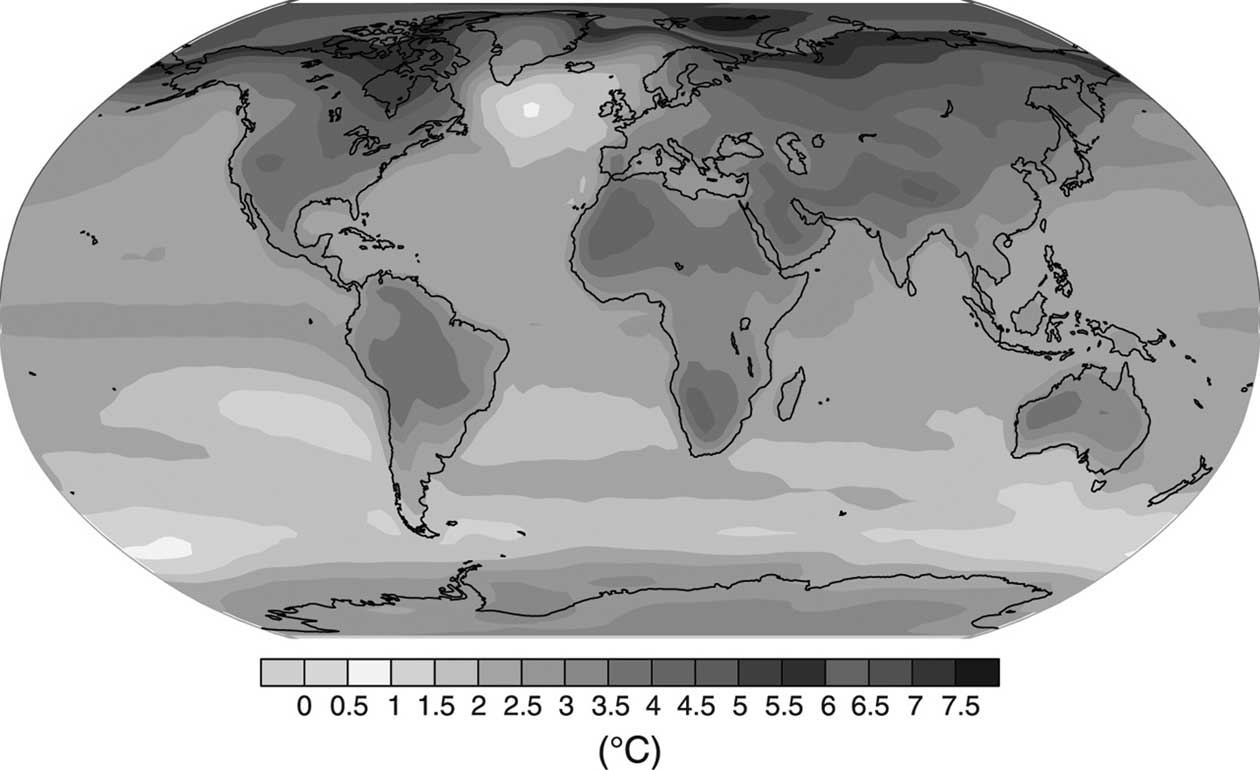consistent with the expectation that a warmer atmosphere will stimulate evaporation of surface water, increase the humidity of the atmosphere and lead to higher overall rates of precipitation. An important factor for agriculture is also the changes in inter-year variability, but while some report important increases in this factor, this is still very uncertain (see IPCC, 2007a). Climate change may also affect agriculture if it causes substantial melting of glaciers that feed major rivers that are used for irrigation. Without additional storage to capture increased summer runoff, more water will flow unused to the ocean, leading to water scarcity in the drier months (see IPCC, 2007a).
4.4.4.3 The potential impact of climate change on future agricultural yields
The impacts of climate change on agriculture have been assessed by IPCC (IPCC, 2007b). In fact, two combined effects have to be accounted for: the impacts of climate itself and the rising atmospheric CO2 concentration. Increased concentrations of CO2 can increase yields and make plants more stress-resistant against warmer temperatures and drought (although the extent to which this occurs is uncertain, and depends on crop type). Climate change can lead to both increases and decreases in yields, depending on the location of changes of temperature and precipitation (climate patterns) and the crop type (Parry et al., 1999; Alcamo et. al., 2005). A crucial factor is whether farmers are able to |
|
adapt to temperature increases by changing planting dates or crops, or crop varieties (Droogers, 2004; Droogers and Aerts, 2005).
The preponderance of global agricultural studies (Adams et al., 1999; Parry et al., 1999, Fischer et al., 2001) shows that climate change is not likely to diminish global agricultural production by more than a few percent, if at all, by 2050; some regions may benefit ( i.e., North America, Europe) and some regions may suffer ( i.e., the tropics). Any losses would be on top of substantial gains in world production (which could be 55% greater than current by 2030). As another indicator of this trend, a small but growing suite of modeling studies generally predict that world crop (real) prices are likely to continue to decline through the first 2-3°C of warming before increasing with additional warming. Hence, 2-3°C of warming appears to be a crucial threshold for crop prices.
While the global situation looks manageable, there are reasons for serious concern at regional levels. The Third Assessment Report of the Intergovernmental Panel on Climate Change (IPCC), reported that a number of models simulate the potential production of temperate crops (wheat, maize, rice) to absorb 2-3°C of warming before showing signs of stress (Easterling and Apps, 2005). More recent assessment work found that agronomic adaptation extends the threshold for warming to beyond 5°C for those crops. Existing tropical crops exhibit immediate yield decline with even |
